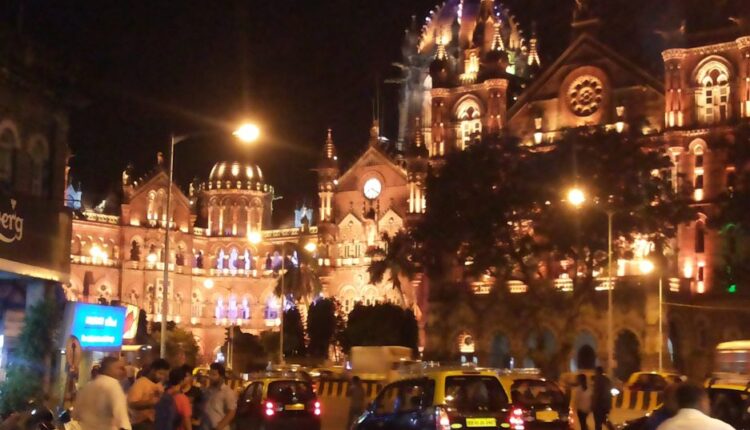
Raking Up Past To Change Future
Beginning of the year 2018 remained quite tensed for Maharashtra. The first day of the new year came with a news of attack on dalits who were coming back after celebrating 200th years of Bhima Koregaon victory, near Pune against ruler Peshwas. The defeat of Peshwa by Mahar soldiers of British has remained an important piece of Indian history because it was a victory of oppressed. About 5 km away from Bhima Koregaon, the vehicles carrying back the people in the evening were attacked, stones were hurled and even a few bike riders chased the buses. A few people escaped, a few were injured and one who was neither part of the dalit group nor the assailants died in the stone pelting. This sparked angry reaction among the dalit community that halted roads, railways in Mumbai and Maharashtra. The official bandh was declared by Bharip Bahujan Mahasangh leader Prakash Ambedkar along with 250 other organisations including leftist. The two names came in the light Shivraj Pratishthan’ Manohar alias Sambhaji Bhide and Hindu Ekta Aghadi’s Milind Ekbote for instigating the people to attack the dalits. The entire incident was initially projected as dalits versus Marathas becasue those who attacked included Marathas also. But in reality, it was dalit versus Brahminical Hindutva forces. It was an attempt to divide the masses on the caste lines that failed to a certain extent.
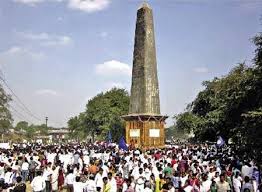
Numerous messages were circulated on the social media about the incident, the history of Bhima Koregaon war, caste biased, questioning bandh, the futility of bandh, how the upper and middle-class society do not follow caste hierarchy etc. But one thing needs to be understood that when a financial capital of Mumbai was brought to the halt for over 10 hours, the reason cannot be simple. A community was trying to express its anger through the bandh which needs to be heard rather than terming it as a useless.
Let’s look at the history briefly about the Bhima Koregaon where Peshwas were defeated. On January 1, 1818, British Army which had only 500 soldiers mostly from Mahar community defeated 2,000 Peshwas. A memorial has been built at Bhima Koregaon and received the military honour on the day. It came to limelight after Dr. Babasaheb Ambedkar visited the place in 1927 and spoke about it for the first time. It was necessary at that time to have a caste identity. Peshwas were symbol of Brahmnical oppression. The dalits in the Peshwa period were treated worse than the animals. The Peshwa period was known for casteist oppression, tyranny against own people, debauchery and corruption. Noted playwrite Vijay Tendulkar in his play “Ghashiram Kotwal” had narrated the real picture of the Peshwa rule and hence his play was banned in Maharashtra then. Let’s see what late Justice Ranade had to say about Peshwa. “Bajirao II, chief of the Brahmin Raj was a worthless profligate, He was surrounded by weak female characters who were representatives of a decrepit society that bred spies, produced greed, pampered depraved wine bibblers. That society also conducted gambling houses, fostered corruption and connived at debauchery! The scene of these vices was so obnoxious that Robertson, the first British Collector of Poona, was terribly shocked to see that the people had lost all notions of morality. Both Bajirao II in the south and Daulatrao Shinde in the north became traitors to the nation and lost their independence of the Marathas.” (source-The Miscellaneous Writings of the Late Hon’ble Mr. Justice M.G. Ranade). So, the defeat ended Peshwa’s dominance over Pune city and ultimately their rule too. No doubt that British were enemies of the country. But Peshwa atrocities were so intense against Dalits that the defeat meant a proud moment for all those oppressed classes under the rule. Also, as per theory of cultural hegemony by Marxist thinker Antonio Gramsci, the ruling class enforces their culture on the masses to manipulate the society. In this case, it becomes necessary to have an alternative narrative of the culture of the masses that Dr Ambedkar gave through Bhima Koregaon victory. However, the history pages have glorified Peshwa rule so much that the people see it with today’s context and question celebration of the victory by British. But one must not forget that Peshwa were the symbols of tyranny, untouchability and caste atrocities and defeating them forever had become necessary to achieve some kind of equality. This in any way does not support British victory.
One more piece of history has been attached to this incidence that is Chhatrapati Shivaji’s son Sambhaji Maharaj’s memorial in Vadhu Budruk village in Pune deistrict. After Sambhaji was killed by Aurangzeb his body was cut into pieces and thrown at the village. With a fear of getting killed by Aurangzeb, no one came forward to perform last rites except Govid Gopal (Mahar) Gaikwad. Two years back, a board narrating information about Gaikwad was broken that created spark between dalits and Marathas in the village. Considering a huge programme at Bhima Koregaon, another board was put at the Vadhu Budruk which was broken in December last year. A case was registered in police for that. This incident became ignition of further attack on the Dalit community on January 1. Interestingly, dalits and Marathas of the villages have withdrawn cases filed against each other and have come together against the attack of Bhima Koregaon.
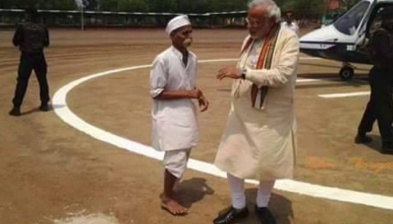
It was a planned conspiracy by the Hindutva forces to attack the Dalit community unaware. Buses loaded with women and children were attacked, stones were thrown, bikers surrounded a few vehicles and absolute panic was created in the evening. Police did not come for help, many victims said that even phone calls were not received by police. There was no proper security arrangement at the Bhima Koregaon programme when over three lakh visited for the commemoration programme. A few hundred got stuck in unknown villages as the news about the attack gone viral like a wind. A youth who was passing from the area died in the stone pelting. He belonged to Maratha community but was neither part of the dalit groups nor the assailants. There was poor media coverage of the incident. But a news about the caste conflict between Marathas and Dalits started circulating on the social media. Those who attacked had Maratha youths but their guiding forces were Brahmins. Manohar alias Sambhaji Bhide and Milind Ekbote emerged as the masterminds behind the attack. Bhide’s association with RSS is well known. But Prime Minister Narendra Modi had called him Guruji or teacher and Chief Minister Devendra Fadnavis’s photos folding hands before Bhide explained it all. Bhide is known for brainwashing youths against Muslims by narrating convenient history of Shivaji Maharaj. Ekbote was the BJP corporator twice and now his wife is the party corporator. The local reports said that police knew about the conspiracy of attacking the Dalits but remained a mute spectator. It is also very questionable that Bhide has all his followers from lower castes and none from the upper caste Brahmins. He was charged for Miraj communal riots in 2009. It is a clear agenda of Hindutva forces to keep engage the non Brahmin youths in emotional issues like Shivaji and convert them into a mercenary against its own people. More we dig into the Hindutva ideology, more Bhide types elements emerged that are independently contributing towards Hindu Rashtra. It is easier for BJP to own them for political gains and disown them in crisis situation. But the shadow army of Hindutva will remain loyal to them.
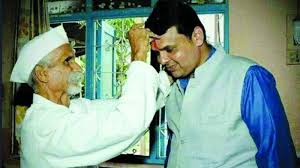
Despite the major incident at Bhima Koregaon and attack later, the media did not give much space for the story. But the anger was seething among the Dalits and an attempt was made to stall the city on January 2nd. On the next day, the successful bandh was witnessed by all. It was after 20 years that the city witnessed such a huge bandh at all levels. Dalits had consolidated earlier in 1997 when killings had taken place at Ramabai Nagar. But the agenda driven media houses tried to project the bandh as violent and threatening to peace of the city. It was also alleged that JNU student Umar Khalid and Gujarat MLA Jignesh Mewani instigated the crowd when they were in Pune for Bhima Koregaon programme. The channels went berserk in projecting the bandh as if it was an India-Pakistan war or some communal riot. Ultimately, the reporters who were reporting on the ground had to face the brunt of such a propaganda. A few photographers were threatened by agitators, a channel reporter was slapped. No doubt that this has to be condemned. But the newsrooms and the news studios did not change their political line towards the bandh. One of the women from Ramabai Nagar in Ghatkopar whose vehicle was attacked questioned us that why the media did not show the attack while so much negative coverage was given to the bandh. We had no answers. The visuals of vandalism, broken buses, were hammered throughout the day creating fear among the people and making anti bandh public perception. The anchors were screaming how the national property was damaged, vandalised, how the people were harassed. But the same outcry was not seen when Babri Masjid was demolished. It was also a national property. Shiv Sena and MNS had conducted more violent protests, movements against outsiders in Mumbai in the past. But this bandh was declared as anti-national by the media. The same anti national line was carried forward by none other than Maharashtra Chief Minister Devendra Fadnavis who said that the outsiders were behind the untoward incident. A similar statement came from RSS that outsiders were damaging harmony of the society. It was clear by the end of the day that on whose direction the media was bringing Mewani and Khalid’s name. The social media was even rampant when it came to spreading rumours and propaganda against the bandh. A video was circulated of a four years old boy carrying handful of stones in his hand. He is walking and telling by looking at the camera that he wanted to kill Marathas who attacked his community. If the video is seen carefully, one can hear that someone was prompting the child from behind the camera to speak the venomous language. Selective approach by media was once again witnessed in the Bhima Koregaon incident. The harassment of the people in Mumbai was highlighted but the attack at the Bhima Koregaon was not even among the top news of the channels or newspapers.
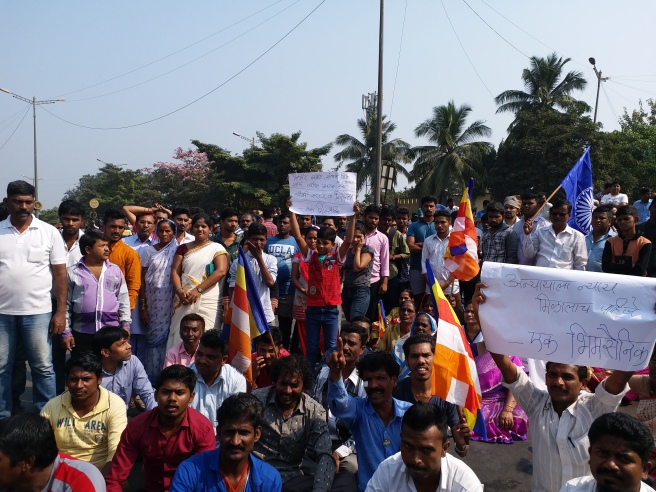
Speaking about the bandh by dalits, the attempts were made to project it as a reaction to Maratha silent protests conducted last year in the state. First of all, the bandh was a reaction of Bhima Koregaon incident and not Maratha morchas. Definitely, Maratha morchas started after Kopardi rape and brutal killing in which the victim was Maratha and culprits from dalit community. There was a demand initially to dilute atrocity act that created rift among Maratha and dalit. In another case, a school boy Nitin Age was brutally killed by Maratha men who later got acquitted. These incidences kept tension between the two communities brewing for some time. But Maratha morchas were out of agrarian crisis, joblessness and socio-economic backwardness among the large section of the population. On some socio-economic parameters even dalits and OBCs were better than Marathas which sparked frustration in the community. This division among the castes actually benefited BJP in all the local body polls in the state. The dalits and OBCs consolidated against Maratha and voted to BJP. Hence, the BJP could make space in many Congress-NCP bastions in rural Maharashtra despite not having any base. RPI leader Ramdas Athavale had already switched side by joining BJP camp and gaining a ministry at the Centre. The BJP led government at the Centre tried to project itself as dalit friendly party by announcing 125th birth anniversary of Dr Babasaheb Ambedkar in 2016, transferring land of Indu Mill for building memorial of Dr Ambedkar etc. However, the government’s real face was exposed when dalit scholar Rohith Vemula committed suicide due to oppression and when dalits in Una, Gujarat were flogged for killing cow when they were cleaning the carcass. Bhima Koregaon was the third in the row that exposed the anti-dalit agenda of BJP further. The Hindutva elements tried to widen the rift between the Maratha and dalit communities. However, mature leadership from both the sides, kept the communities together and warned them against clashes.
When a huge number of people are hitting the streets that is never without a reason. Their demand can be right or wrong but the society has to listen to it. The mammoth Maratha rallies were mocked in the same way. Questions were raised as to why one of the dominant castes in Maharashtra was asking for reservation. The demand might not stand constitutionally but their weak social-economic plight could not be ignored. In the same manner, the bandh cannot be seen with “holding city for ransom” approach. The community is trying to speak about injustice with them which cannot be ignored. However, the BJP government instead of investigating the matter has announced a judicial inquiry into the attack. Protests, bandhs, strikes are the mediums in the democracy to express demands, sentiments and even condemn certain things. The last question being asked was about what did they achieve by the bandh. The community and society achieved a lot by bandh. A social churning has already started. The Maratha community has also extended their hand towards the dalit and vice versa to bury the hatchet among them. The two castes have understood that this is a war against Hindutva and no time to indulge in infighting. Maratha and dalits seen together in social programmes, in bandh, in supporting each others’ communities. Even the slogans were shouted in the bandh were “Dalit Maratha ek hai, Bhide Ekbote fake hai.” (Dalit and Marathas are together against fake Bhide and Ekbote.) This is the achievement of the bandh or earlier Maratha protests.
The upper caste is being very critical about the caste conflicts and why to rake up the 200 years old history now. The caste conscious was not so intense among the lower castes because they were suppressed by dominant castes. The Brahminical caste conscious was not visible because, the caste had upper hand almost everywhere. In the past, only the Brahmins were caste conscious but subtly due to their dominance. Leaders like Dr Ambedkar, Periyar E. V. , Kanshiram have given caste identity to the oppressed in the society. Glorification of Bhima Koregaon was part of the caste consciousness. The implementation of Mandal report has also given voice and self identity to the lower castes. There is no point in crying foul when the other castes are slowly learning about self pride. Even the Brahmin organisations are vocal enough condemning social reforms in the society and demanding their rights. They even made ridiculous demand of reservation. But that is never termed as casteist approach. Whenever the lower castes raise their voice, the society terms it as caste conflict or casteist.
Now the last argument about bringing past in the present. I will quote Marxist historian Eric Hobsbawm on this, “Nations without a past are contradictions in terms. What makes a nation is the past, what justifies one nation against others is the past, and historians are the people who produce it.” History gives meaning to our lives, it gives sense to the current events, it brings cultural awareness, it tells us about mistakes committed in the past, tyranny against own human race, love, compassion, exploitation, oppression. By going through this process for years, humans have evolved. History is connected with the human evolution. So, even if the past is dark, it needs to be discussed in the present context. For the same reason humans are superior to any other animal.
